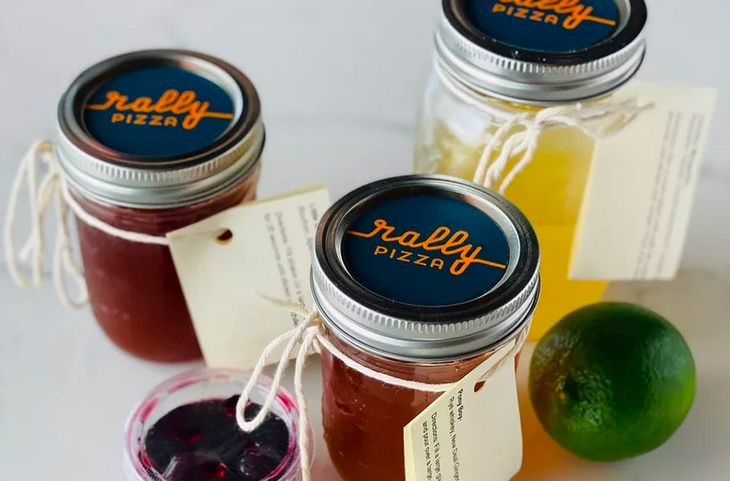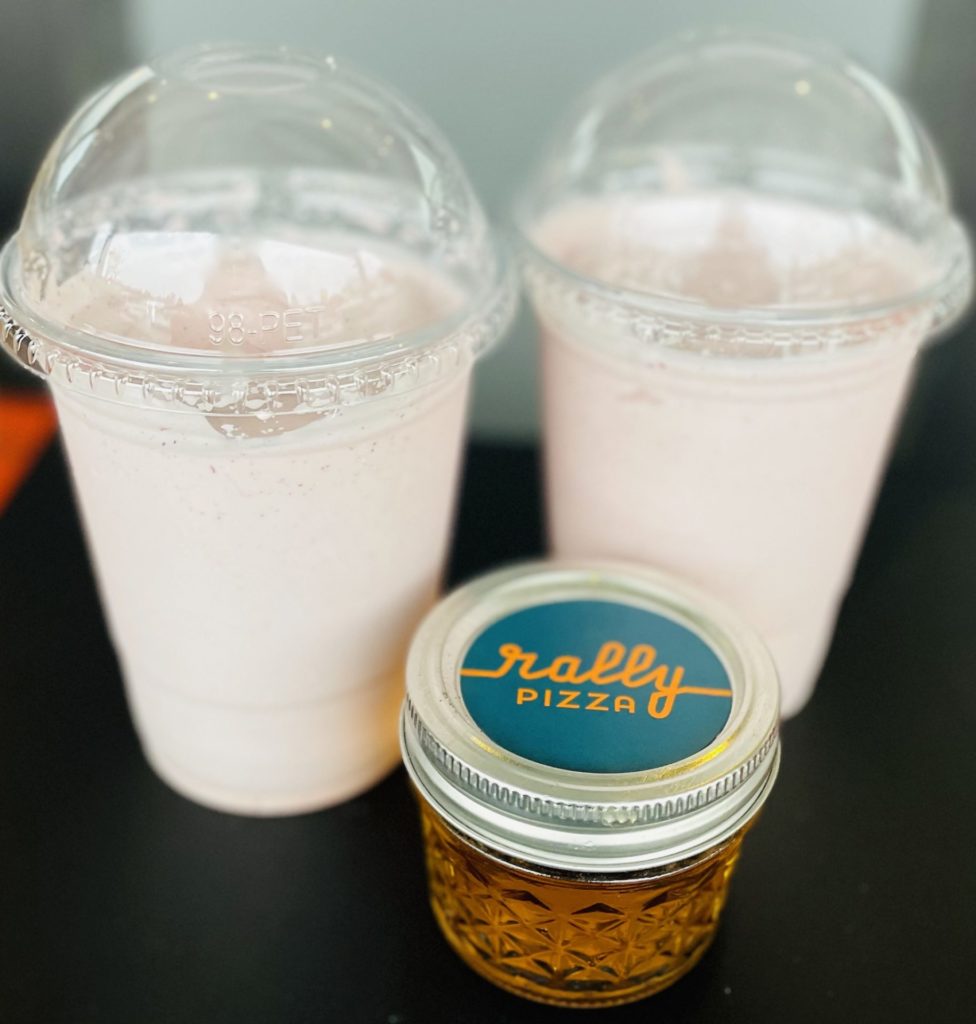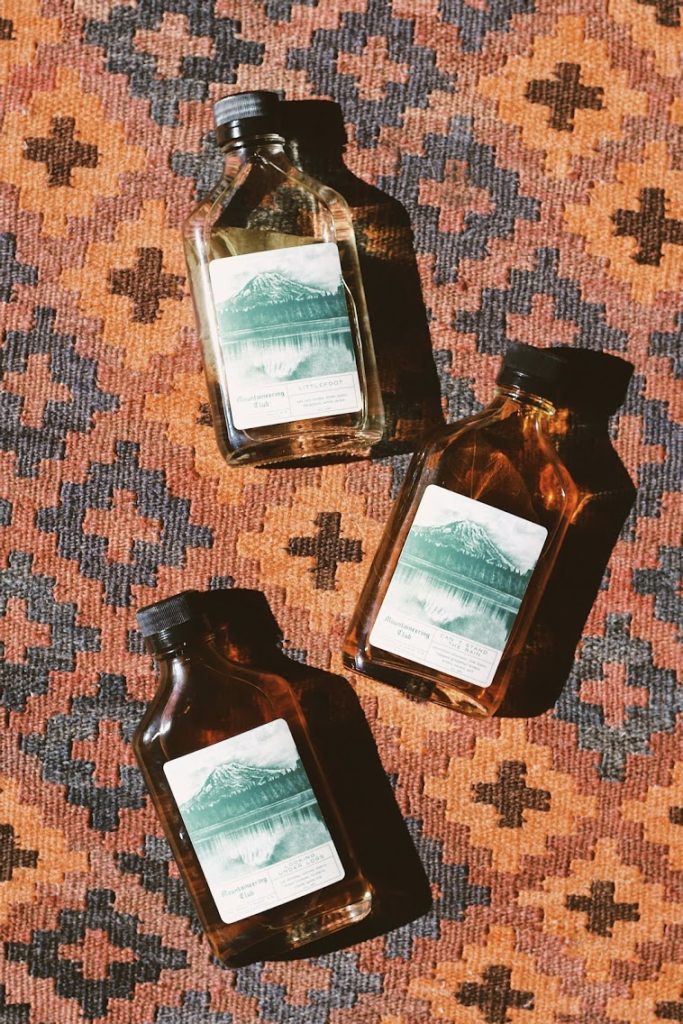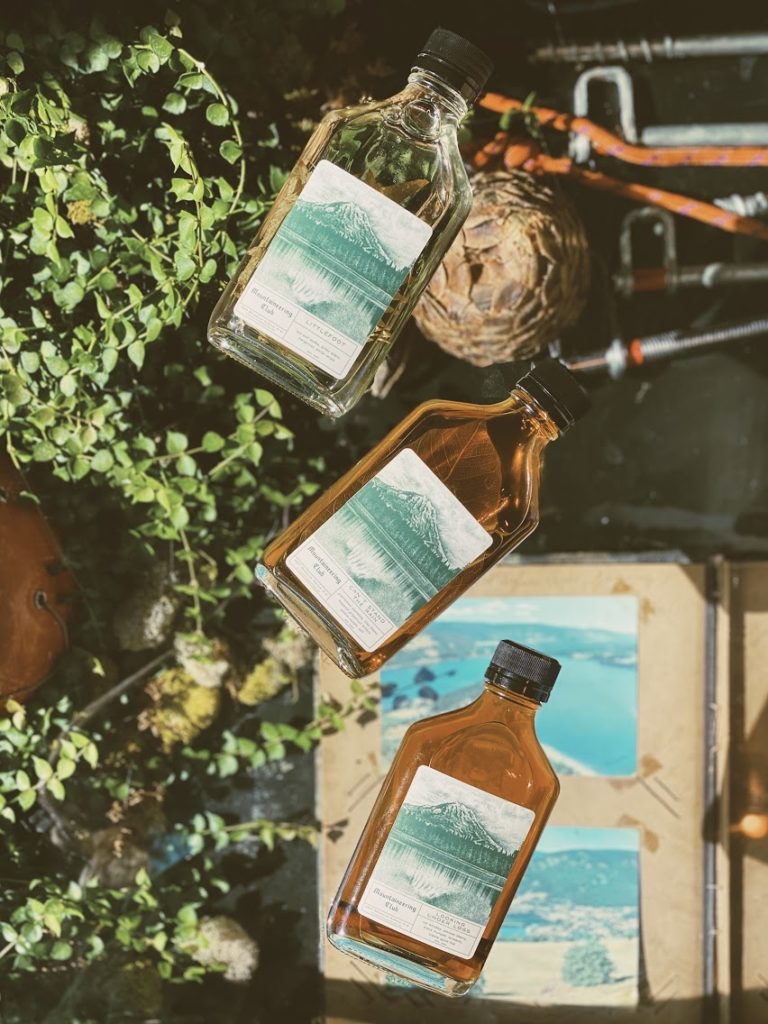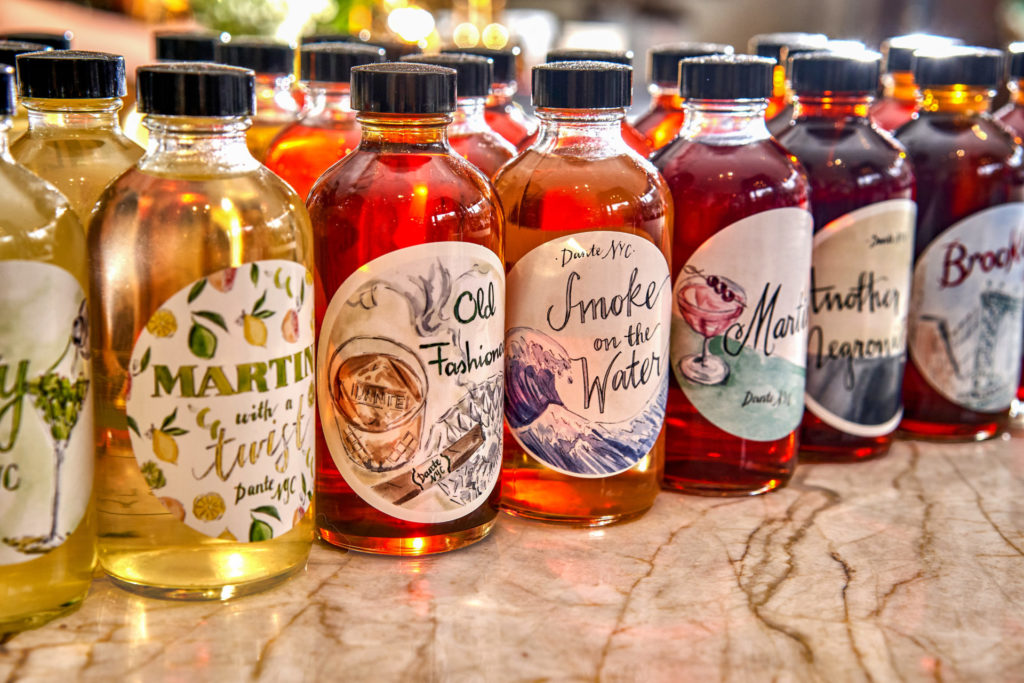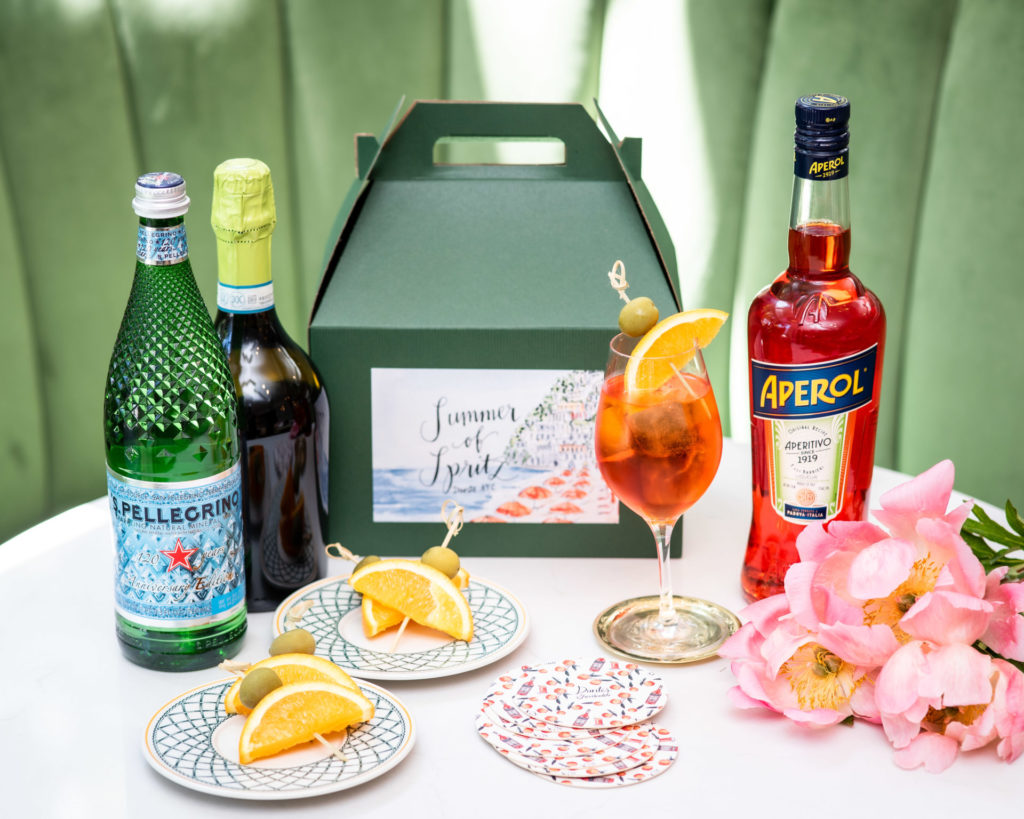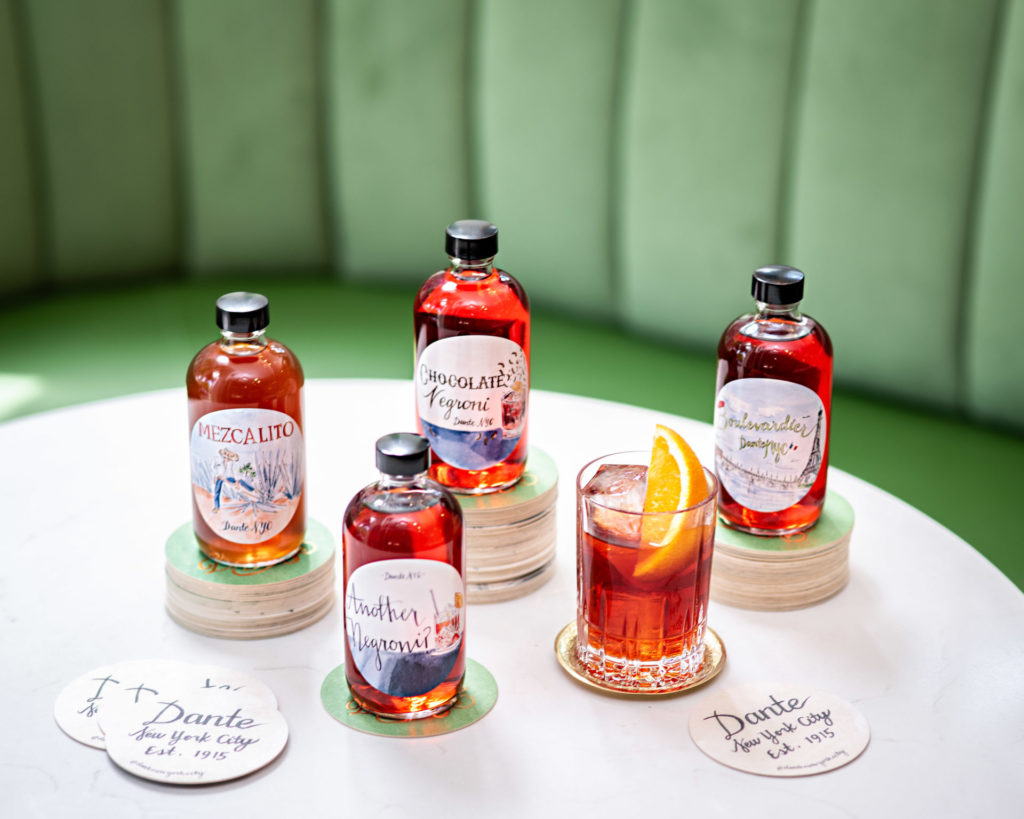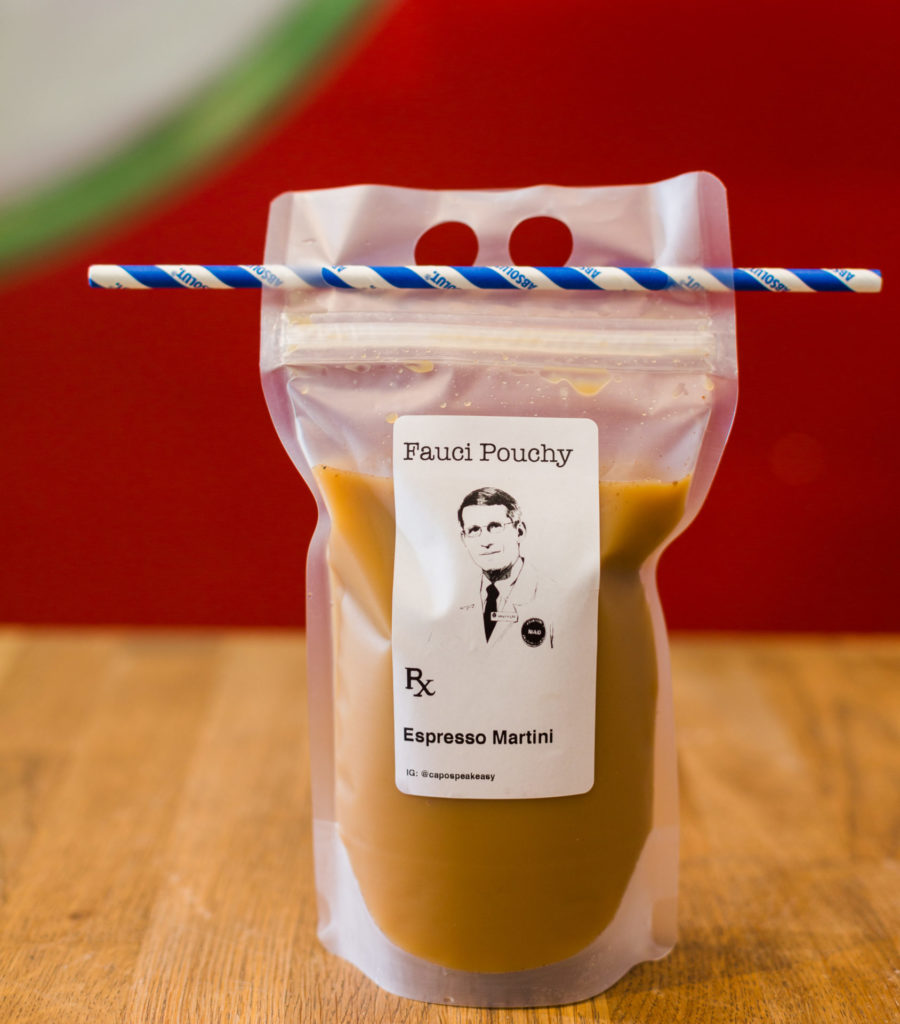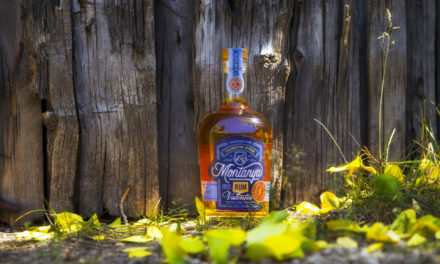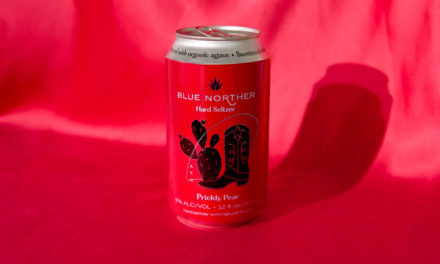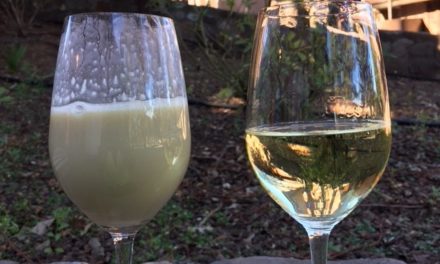As Capo Italian Deli in Washington, D.C., struggled to stay afloat in the early months of the pandemic, Beverage Manager Rohit Malhotra was tasked with what type of vessels he could use to sell cocktails to-go. The search bounced him from pouches to bottles and back again, as container supplies ebbed and flowed the same way many household products did back in the spring. Each month brought another adjustment.
Welcome to the new on-off premise, where bars and restaurants are not only forced to find ways to provide safe pick-up and delivery of meals, but also develop programs and processes to sell popular cocktails to-go.
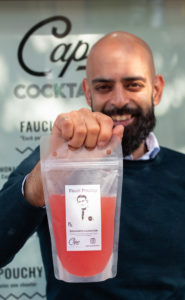
Rohit Malhotra with a Fauci Pouchy
During the pandemic, many bars and restaurants have been forced to get creative in the ways they craft, market, and package beverage alcohol. Sporadic closures and shifting rules about how and when operations could serve customers made old ways of doing business nearly impossible. As the pandemic accelerated, many states took note of the struggle for suddenly shuttered on-premise businesses and loosened restrictions on how beer, wine, spirits, and cocktails could be sold.
But that lifeline—letting bars and restaurants sell beverage alcohol for pick-up and delivery—had a catch: How could those operators, accustomed to making drinks a la minute, create a supply system while maintaining quality, safety, and customer satisfaction?
The Emergence of Walktails
From the scramble at the beginning, as operations fought to stay afloat, to the more sophisticated and thought-out programs that have evolved, ingenuity and adaptation have been key. In some cases, suppliers are helping (or at least trying to) find ways that will serve their interests as well as those of the hospitality outlets.
So far, innovation has mostly focused on cocktails, as packaged beer, wine, and in some cases, spirits, were easily enough handled for off-premise consumption. With a variety of vessels tried, from bottles and cans to flasks, sealable plastic bags, and ready-to-mix cocktail kits, individual operators are finding novel ways to make the new system work. On the supplier side, this includes not only cocktail evolutions, but also wine in cans, bags, and even tubes.
Lana Toler, marketing and innovation manager for Yardley, Pa.-based innovation and physical brand enhancement company The Spearhead Group, has been working on opportunities to co-develop high-quality, safe to-go packaging for on- and off-premise clients. “How can we provide the packaging for restaurants to sell to-go cocktails? On-premise establishments are getting a lot of customer requests to take home their favorite cocktails from that particular establishment. With about 30 states that are going to continue cocktails to-go, how do we make tamper-resistant containers for these different on-premise accounts? It’s definitely been an adventure trying to figure out how all this is going to work.”
Toler points out that packaging decisions for national chains have to wend their way through various state rules that, for example, restrict giving away cup-type containers that might encourage immediate consumption. That makes developing containers that can be securely sealed not only important for drink quality and security but also to address legal restrictions.

Applebee’s Mucho to go
Recently, some national chains have settled on ways to provide cocktails to-go. The largest, Applebee’s, opted for existing plastic vessels with lids. “Each cocktail comes in an Applebee’s signature Mucho To Go 20-ounce cup, properly mixed, garnished, and ready to take home,” says Patrick Kirk, vice president of beverage innovation for the brand. Signature Mucho cocktails available include Margaritas, Long Island Iced Teas, Bahama Mamas, and seasonal limited-time offers.
Tying Products to a Theme
Early on, many operators, especially those who already had established prebatched cocktail programs, pivoted swiftly. For example, cocktail destination Dante in New York City, already equipped with draft and bottled cocktail programs, became one of the first participants when New York limited bars and restaurants to delivery and pick-up but still allowed alcohol sales.
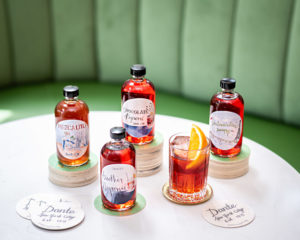
Dante Negroni Sessions [Photo Gregory Buda]
In Seattle, Wash., where the pandemic struck hard and early, the Graduate Seattle Hotel‘s rooftop Mountaineering Club launched ready-to-drink Canteen Cocktails and Adventure Pack dinner kits, tying the take-out and in-room drinking/dining effort to the operation’s outdoor exploration theme.
Steven Sue, director of food and beverage for the Graduate Seattle, says the packaging—flask-shaped bottles they call glass canteens—reflects the operation’s identity. “The Mountaineering Club has an outdoorsy vibe to it. That’s kind of where the initial [canteen] idea came from,” he says. “It also just seemed like the way to do it because, with each being two servings, these seemed like the perfect size to keep our offerings available for guests and worth the effort financially. Additionally, because we’re located in a hotel, we have the luxury of steady foot traffic passing our lobby grab n’ go and the licensed permission to essentially treat it like an extension of the hotel room minibar.”
The approximately 7-ounce flasks, meant to provide two servings, are sold alone or in Adventure Packs with a meal combination. The six cocktails are stirred, aromatic drinks, like Can’t Stand the Rain (Plantation Xaymaca, Lillet Blanc, Amaro Noveis, hopped grapefruit bitters, and salt), or thermos-friendly hot cocktails like Winter in Walla Walla (Ceylon, anise, clove, orange zest, Togarashi spiced honey, apple cider vinegar, organic red wine, and Becherovka). Bottled, carbonated cocktails generally are packaged with crown cap seals rather than twist-off, tamper-proof seals.
Pouches Travel Well
Operators who started by serving drinks in glass vessels were frequently forced to scramble, as a shortage of both bottles and aluminum cans created rolling outages through the summer. Capo Deli tried a variety of packaging options, including branded plastic pouches given to them by a spirits rep. Those were in limited supply, so Capo then shifted to Mason jars; when the jars became harder to source, it was back to sealable 50 mL pouches.
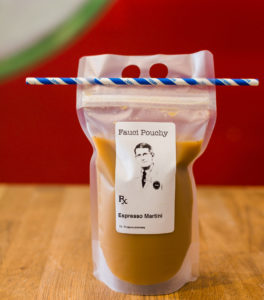
Capo Fauci Pouchy
Many operators have tried variants of plastic bag cocktails and beers. At Providence, R.I.’s Courtland Club, cocktails including the Mother Theresa (mezcal, beet juice, cassis, raspberry, and Campari) are packaged in Ziploc bags. Brooklyn, N.Y.’s Jiku Wicked Wings pours up to 10 of its draft beers in resealable, 16-ounce plastic bags. But Capo Deli garnered national press when it launched a program with an inspired name: the Fauci Pouchy, inspired by Dr. Anthony Fauci, head of National Institute of Allergy and Infectious Diseases and a leading voice in pandemic advice.
“At first we couldn’t get enough pouches, but they really worked for us and the cost per unit is negligible compared to a bottle. We have to be very careful about margins, especially these days,” says Malhotra.
Capo currently offers six, two-serving cocktails and three shooters in pouches, as well as two bottled cocktails.
“The pouches really do travel well,” says Capo Manager Natalie Flynn. “We’ve had to travel with the pouches several times, and I found I can throw 10 pouches in a plastic bag, drive with them in my front seat, and I haven’t had a single one leak, ever.” The format has continued to evolve, from single-sealable to double-sealable pouches.
Uncanny Choices
Suppliers have lately become enamored with cans for all sorts of beverages—hard seltzer, wine, craft beer, even cocktails—especially as craft pioneers ventured into the arena. But few bar and restaurant operators could justify taking them on. Until now. The twist, though, is that hospitality operators are now canning their own.
“We’re big believers in cans,” says Brendan Bartley, head bartender and beverage director for NYC’s Bathtub Gin. “They represent the ultimate container for keeping out air and light, which are the primary culprits in spoilage. Moreover, recent developments in canning technologies have prevented water loss and oxidation, and maximized sanitization.
“When designing drinks for the cans, the most important factors we considered were fermentable ingredients and perishable items,” Bartley continues. Bathtub Gin partnered with some spirits brands for its canned concoctions, specifically for the Algonquin (Old Duff Genever, dry vermouth, and a sweetened and stabilized pineapple acid solution). “[Old Duff founder] Phil Duff reached out to us about creating a canned cocktail that incorporates his genever, and we saw an opportunity to debut our first canned cocktail and shine a light on genever, which isn’t a common spirit category,” says Bartley.
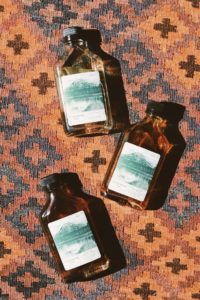
Mountaineering Club canteens
NYC’s The Up & Up went traditional, canning a gin and tonic variant to start. “The simplest drinks are often the easiest ones to get wrong, and this is very true of the gin and tonic,” says Ali Martin, head bartender. “What’s more, the simplicity of this particular drink provides an excellent foundation for creativity and complexity. We chilled the base batch of the drink and the bottles of tonic separately. Then we added the batch to the cans first, followed by slowly adding the cold tonic directly from the bottle. A cold initial temperature is vital to maintaining a high degree of effervescence in the final results of the canning process.”
Self-canning is a growing enterprise. Operators including Detroit’s Thai restaurant Takoi turned to cans for house-made lines of cocktails, and businesses such as NYC’s Canned Cocktail Company have sprung up, offering to can, label, and market an operation’s drinks. The company—and others like it—will can onsite or at its one of own locations (it currently has one in New York City, one in the Hamptons, N.Y., and one in Lake Tahoe, Calif.). There are also some operations have bought their own canning systems, but most of these were already canning for off-premise consumption.
Venue is an important consideration, says Sue at the Graduate Seattle Hotel. “I think, depending on the style of your space, what your identity is, and what you’re trying to say, [packaging cocktails] can be really fun and can add a revenue stream we couldn’t take advantage of previously.”
A New Opportunity?
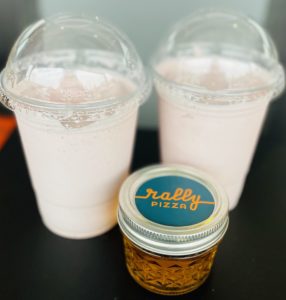
[Photo courtesy Rally Pizza]
Rally sells Boozy Shakes for two in three flavors, and Boozy Floats, which creates another issue. “Since we don’t have shake containers that seal, we have to send the alcohol out on the side,” he says. “We’re not allowed to mix it in.”
For cocktails, Wickham went with double serve for practical purposes. “We don’t sell individual cocktails because of the packaging. When we package it as two servings, we can include ingredients like Prosecco by sending a split as part of the two cocktails.”
Says Spearhead Group’s Toler, “Many on- and off-premise accounts have focused on selling already packaged items, such as cans of beer or full bottles of wine or spirits, to bolster their sales volume. However, adding opportunities to sell higher margin cocktails to-go may just be the added item menu to create sustainability through the winter months.
“I see cocktails to-go as a long-term option, not just through the next year,” she continues. “Why wouldn’t you, as a consumer, want to be able to order your favorite cocktail to-go with your carry-out or delivery meal?
“I don’t think it’s a trend so much as the beginning of a new opportunity and a new category that we haven’t been able to explore before.”
SIDEBAR
New Supplier Options
As the pandemic wears on, once unthinkable packaging options for on-premise beverages may be on the horizon. A Dutch company called Tubes specializes in wine in glass or recycled PET 100 mL tubes. Wine-in-bag packagers, including VRAC, Irreverent Wines, and Maivino, which offer a variety of types in large format bags, have reportedly seen sales boom since the pandemic reached the United States.
Bag-in-box cocktails, too, have emerged. Florida’s Kozuba & Sons Distillery launched Bar Box with 1.75 liter cosmopolitans, negronis, and vodka sours. In Brooklyn, N.Y., aperitivo maker St. Agrestis followed its negroni bag-in-box with a seasonal black Manhattan and boulevardier.
Numerous spirit companies have dabbled in home bartending technology, notably the Keurig-owned Drinkworks, which uses technology similar to the familiar coffee maker to infuse pods with cocktail ingredients. Drinkworks pods are pre-mixed (alcohol included), the machine chills and can carbonate, and cost around $300.
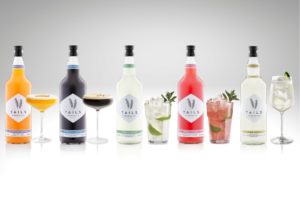 Bacardi recently took another direction in the UK and Germany, thanks to a prescient pre-pandemic move. In 2018, the company acquired a minority stake in premium crafted and batched cocktail company Tails, a “hassle-free approach to serving premium quality cocktails” in on-premise venues. In November 2020, Bacardi acquired the company outright. Tails cocktails are crafted using the Bacardi portfolio of premium brands and then pre-batched in bottles or on draught so that all bartenders, wherever they may be, can serve great tasting cocktails easily, quickly, consistently, and at-scale.
Bacardi recently took another direction in the UK and Germany, thanks to a prescient pre-pandemic move. In 2018, the company acquired a minority stake in premium crafted and batched cocktail company Tails, a “hassle-free approach to serving premium quality cocktails” in on-premise venues. In November 2020, Bacardi acquired the company outright. Tails cocktails are crafted using the Bacardi portfolio of premium brands and then pre-batched in bottles or on draught so that all bartenders, wherever they may be, can serve great tasting cocktails easily, quickly, consistently, and at-scale.
“The hospitality industry is facing extraordinary challenges, but make no mistake, our brands are built in bars and the on-trade continues to be a priority for Bacardi,” said Mahesh Madhavan, CEO of Bacardi Limited, at the time of the announcement. “We are offering bars and restaurants all our support to help them climb out of this crisis, including smart solutions to help them drive business and profit. Tails is a perfect example. Tails opens up the world of premium cocktails to bars which could never otherwise entertain the idea and at the same time it will open up a new revenue stream when they need it most.”

